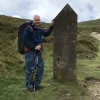Kernandi
Member
- Time of past OR future Camino
- (2018)
Hi- I am planning on walking CF beginning in SJPP on Apr 2. I have a couple of questions I need help on as I work on my packing plans.
1. I have poles I really like (REI telescoping 14 oz) but they will not fully fit inside my Osprey Manta 36. The top half of the foam grip would stick out of the zipper. I do not want to check my bag on the way there, although I don't mind checking on the return. Should I leave my poles at home and plan to buy some in SJPP?
2. For my warm insulating jacket, I would like to take my older Patagonia down jacket which weighs 11.4 oz. I have a newer one, so if I don't end up using this I could donate it (or just use it as a pillow). I also have a fleece which weighs 6.84 oz. It isn't quite as convenient in that it is a quarter zip instead of a full zip jacket and I wouldn't want to just donate it if I am not using it, but it does weigh less. Which would you recommend I take?
Right now it looks like my pack would be about 12.5 lb without water (not counting pole weight but assuming I took down jacket not fleece).
Thank you for any advice you can offer!
Andrea
1. I have poles I really like (REI telescoping 14 oz) but they will not fully fit inside my Osprey Manta 36. The top half of the foam grip would stick out of the zipper. I do not want to check my bag on the way there, although I don't mind checking on the return. Should I leave my poles at home and plan to buy some in SJPP?
2. For my warm insulating jacket, I would like to take my older Patagonia down jacket which weighs 11.4 oz. I have a newer one, so if I don't end up using this I could donate it (or just use it as a pillow). I also have a fleece which weighs 6.84 oz. It isn't quite as convenient in that it is a quarter zip instead of a full zip jacket and I wouldn't want to just donate it if I am not using it, but it does weigh less. Which would you recommend I take?
Right now it looks like my pack would be about 12.5 lb without water (not counting pole weight but assuming I took down jacket not fleece).
Thank you for any advice you can offer!
Andrea





















